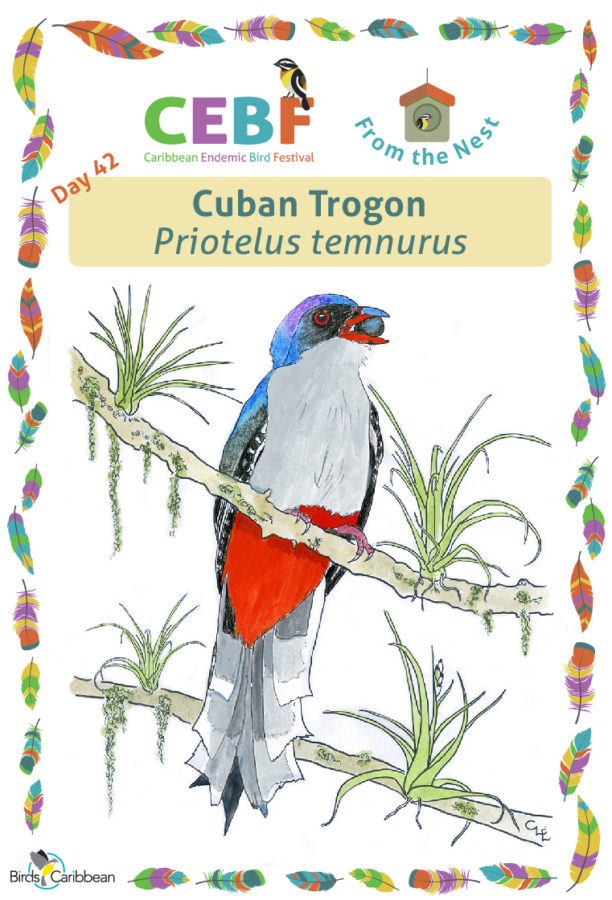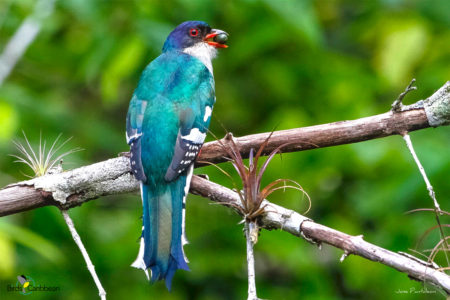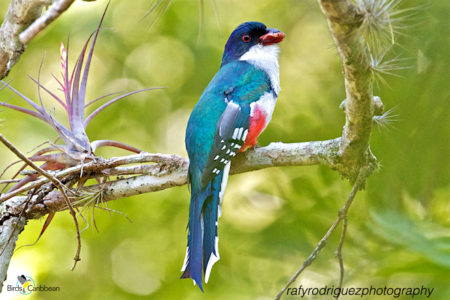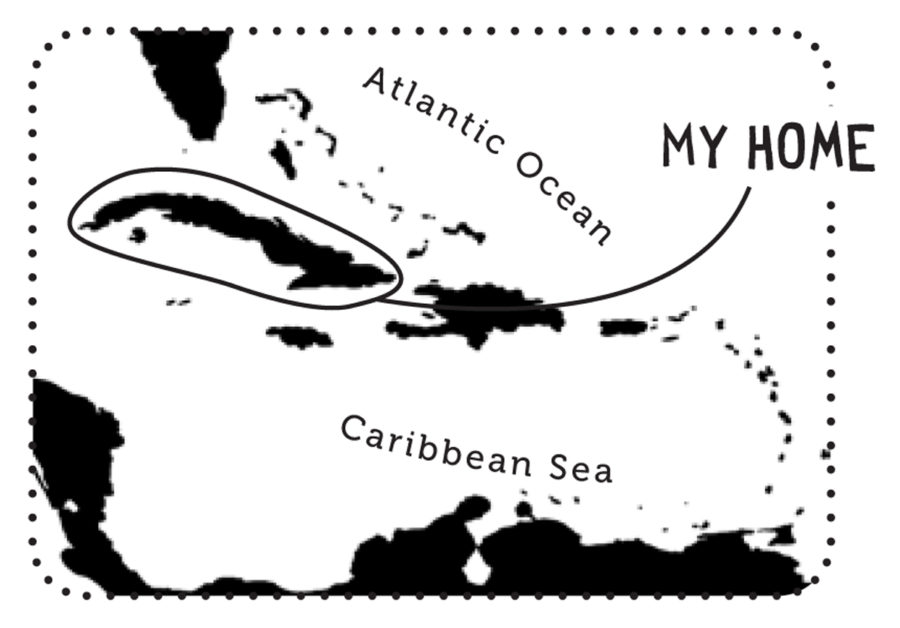Celebrate the Caribbean Endemic Bird Festival (CEBF) with us in our virtual “From the Nest” edition! Have fun learning about a new endemic bird every day. We have colouring pages, puzzles, activities, and more. Download for free and enjoy nature with your family at home.

Endemic Bird of the Day: Cuban Trogon
Cuban Trogon (Priotelus temnurus), Tocororo
This beautiful bird, of resplendent plumage, is the National Bird of Cuba. It’s colors match the colors of the nation’s flag. It is iridescent dark blue-green above, with a violet-blue crown and nape, grayish white throat and breast, and brilliant red belly and eyes. The wings and tail are patterned in blue, black, green and white. The underside of the tail appears mostly white and the tips of the tail feathers are prominently flared. When perched, its size, bright colors, distinctive voice, and posture make this bird unmistakable.
Cuban Trogons are rather inactive birds and are easily approached. They are usually seen alone or in pairs. Their most common call is a repeated toco-toco-tocoro-tocoro,from which it’s local name Tocororo is derived. They are common in wet and dry forests at all altitudes, and are widespread all over Cuba, the Isle of Youth and some cays. These birds do not build a nest. Instead, they use abandoned woodpecker holes or other natural cavities, where they lay 3-4 white eggs from April to July. Their diet is flowers, fruits, insects, and reptiles, including Anolis lizards, which they also feed to their young. It hovers while feeding, much like a flycatcher.
There are 43 species of trogons in 6 genera in the Family Trogonidae (6 quetzals and 37 trogons), that live in tropical and subtropical forests of the Americas, Africa and Asia. The Cuban trogon is one of two species restricted to the islands of the Caribbean; the other species is the Hispaniolan Trogon. Undisputedly Cuba’s national bird is one of the most beautiful representatives of its family. Trogons are colorful and beautiful birds, but the particular shape of the Tocororo’s tail makes it unique. Learn more about this species, including its range, photos, and calls here.
Colour in the Cuban Trogon!
Download the page from Endemic Birds of the West Indies Colouring Book. Use the drawing above or photo below as your guide, or you can look up pictures of the bird online or in a bird field guide if you have one. Share your coloured-in page with us by posting it online and tagging us @BirdsCaribbean #CEBFfromthenest
Listen to the call of the Cuban Trogon
The Cuban Trogon‘s call is a repeated toco-toco-tocoro-tocoro, from which it’s local name Tocororo is derived. The throat and tail vibrates as the bird calls (see videos below).
Puzzle of the Day
Click on the image below to do the puzzle. You can make the puzzle as easy or as hard as you like – for example, 6, 8, or 12 pieces for young children, all the way up to 1,024 pieces for those that are up for a challenge!


Activity of the Day
FOR KIDS & ADULTS: Enjoy these short videos of Cuban Trogons calling. The video is by Cuban ornithologist, Arturo Kirkconnell, the bird perched out in the open and calling (turn up the volume). Note its upright posture and red, white and blue colors. Its throat and tail vibrate as it calls. You can hear another trogon calling in the distance. The second video shows a closer view of a calling trogon.

